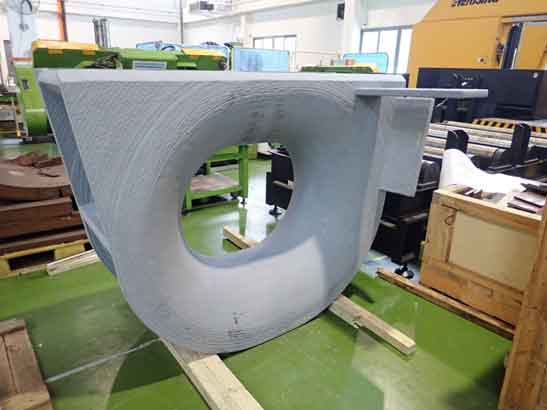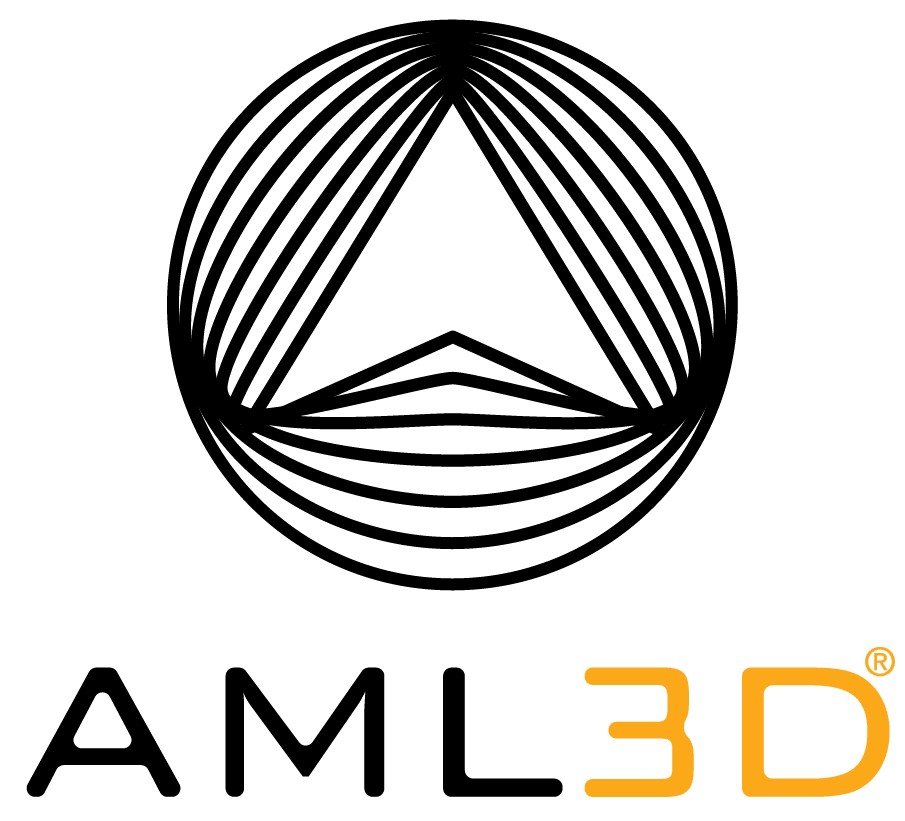AML3D’s partner Keppel Technology & Innovation receives DNV verification certificate for the world’s largest 3D printed shipboard fitting, manufactured by AML3D Ltd.
We are excited to share that Keppel Technology and Innovation (KTI) recently received a verification certificate from DNV’s Global Additive Manufacturing Technology Centre of Excellence in Singapore for a metal 3D printed, deck mounted Panama Chock.
At 1,450 kg, the Panama Chock, designed and produced to meet both KTI’s project-specific material specifications and international standards, is the world’s largest 3D printed shipboard fitting to receive verification from DNV.
Traditionally manufactured through casting, Panama Chock’s are large shipboard fittings, supporting structures welded to a ship and used for towing and mooring; KTI partnered with us, using our patented Wire Additive Manufacturing (WAM®) process for the part manufacture.
Francois van Raemdonck, Managing Director of KTI, comments
“KTI has been working on this project with Keppel O&M, DNV and AML3D since 2019, and we are proud to achieve this endorsement. Keppel is transforming the way it harnesses technology and KTI is supporting this by collaborating with Keppel business units to innovate and create value. This is in line with Keppel’s Vision 2030, which includes leveraging advanced technologies to drive growth.”
The equivalent of 3D printing, Additive Manufacturing is an emerging technology that uses 3D model data to fabricate parts, enabling benefits such as significant time savings. Wire Arc Additive Manufacturing (WAAM) can 3D print large scale marine grade metal structures with the potential to allow a productivity step-change in shipbuilding.
Aziz Merchant, Executive Director of Keppel Marine & Deepwater Technology, the technology arm of Keppel O&M, said
“Keppel O&M is constantly exploring new technologies to stay ahead in the industry and additive manufacturing has the potential to increase the efficiency of shipyard operations. The 3D printing of the Panama Chock shows that large components can be made available with shorter lead times and with equal standards of quality and performance. We are encouraged by the verification and we look forward to exploring how AM can be implemented on a wider scale.”

Deck mounted type Panama Chock (SWL150Ton) produced during the additive manufacturing project.
The use of ER70S-6 wire feedstock, combined with our WAM® process, resulted in a material yield strength twice that of the original cast material. Additionally, various non-destructive testing and evaluation methods showing the Panama Chock was produced with acceptable internal soundness. The part was then proof load tested to 20% higher load than its design working load. Following the successful load test, non-destructive and destructive testing, the results were reviewed by all parties before the final verification statement was issued.
Dr. Sastry Kandukuri, Senior Principal Materials Specialist, Energy Systems at DNV, said
“I am very happy our Global Additive Manufacturing Technology Centre of Excellence was able to support KTI to reach this milestone. Our team of multidisciplinary experts across DNV with a combined AM service experience of 20,000+ hours look forward to continuing to work together with KTI as they develop and qualify AML3D’s WAM® 3D printing capabilities.”
AML3D Chief Executive Officer, Andrew Sales, comments
“We’re proud to have been able to partner with KTI and demonstrate the advantages of our patented Wire Additive Manufacturing (WAM®) capabilities in the creation of the world’s largest 3D printed Panama Chock. Additionally, we are equally as excited to see this WAM® printed component receive official verification by DNV. This now offers a quality assurance pathway for a wide range of components that can follow a similar validation process. It is a fantastic achievement by DNV, KTI, the AML3D team and our other partners in this project. Working with KTI’s vision for implementing AM has been a further endorsement for our own business model and we’re excited for the future.”

The Panama Chock produced through additive manufacturing was comprehensively function tested to 20% above its design load, by DNV’s laboratory partner
The Panama Chock was subject to extensive testing by DNV Singapore Laboratory and Marinelift Testing & Supply Pte Ltd. Singapore, where researchers and testing engineers used advanced microanalysis instrumentation to generate high-quality microstructural information and images. In addition, the mechanical and non-destructive testing were assessed and compared against established marine grade cast material.
Throughout the production and testing processes, there was close and collaborative engagement between DNV, KTI and AML3D. Factors such as functional specifications, safety, testing procedures and acceptance criteria were all subjected to scrutiny by experts.
Brice Le Gallo, Regional Director, Asia Pacific Energy Systems at DNV concludes,
“It’s pleasing to see further advances within the offshore and marine industry with this development for the world’s largest 3D printed shipboard fitting. Creating trust is critical for the acceptance of 3D printed parts and DNV’s certificate plays an important role in ensuring that this is the case.”
Source: Keppell receives DNV verification for Panama Chock PDF, Press Release. First published: DNV Keppel receives DNV verification certificate for the world’s largest 3D printed shipboard fitting.

About AML3D
AML3D Limited, a publicly listed technology company founded in 2014, utilises new technologies to pioneer and lead metal additive manufacturing globally. Disrupting the traditional manufacturing space, AML3D has developed and patented a Wire Additive Manufacturing (WAM®) process that metal 3D prints commercial, large-scale parts for Aerospace, Defence, Maritime, Manufacturing, Mining and Oil & Gas. AML3D provides parts contract manufacturing from its Technology Centre in Adelaide, Australia, and is the OEM of ARCEMY®, an industrial metal 3D printing system that combines IIoT and Industry 4.0 to enable manufacturers to become globally competitive.
